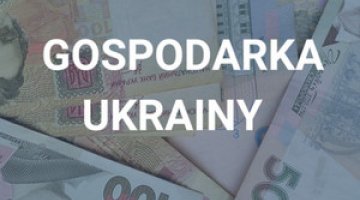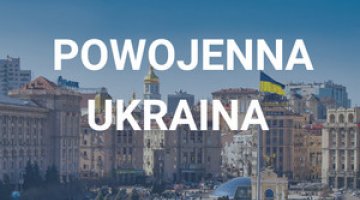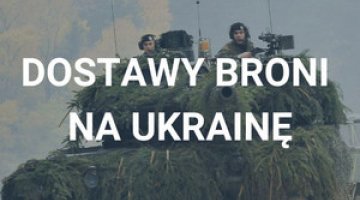Ukraine: the crisis is worsening
The long-lasting protests in Kyiv have transformed into a political crisis, in which the protesters are no longer concerned with forcing the Ukrainian government to sign the Association Agreement with the European Union, but are now calling for the overthrow of President Viktor Yanukovych. However, neither the protesters nor the ruling camp have a clearly defined scenario of how events should develop, and the actions of the police are evidence of indecision on the government side. We may presume that both camps contain competing groups working towards different objectives. By the evening of 10 December, the number of participants in the protests and their determination had clearly diminished; but the overnight action on 11 December revitalised them. All this means that organising talks between representatives of the opposition and the authorities will be very difficult, because the protesters could see such a move as a “betrayal of the ideals of the Maidan”. Nevertheless, it is not impossible that a compromise solution will be worked out. It also seems quite likely that Yanukovych will try to wait out the protests, in the hope that they will peter out by the end of the year.
Timeline of the protests
The protesters gathered on Independence Square and in several public buildings held a rally on 8 December called ‘the March of Millions of Ukrainians’, which was attended by approximately 400,000-500,000 people (the largest number in the course of the current protests). The demonstration passed off peacefully. The police acted with restraint, limiting themselves to the protection of public buildings and preventing the protesters from coming into contact with a pro-Yanukovych rally numbering about 1500 participants. They did not respond even when a group of protesters began to break up the tents and build makeshift barricades around the government and presidential offices. During the meeting’s speeches it became apparent that the protesters’ warmest applause was for Oleh Tiahnybok, the leader of the Svoboda party, and Yuri Lutsenko, the former interior minister, who seems to have been the main organiser of the protests’ technical facilities. Vitaly Klitschko was received with less enthuasiasm, and Arseniy Yatsenyuk even less so.
The action to build new barricades was led by one of the leaders of Batkivshchyna, Oleksandr Turchynov; and carried out by members of the recently formed ‘Maidan self-defence units’ (numbering about 1500 people) and members of Svoboda. According to unconfirmed reports, the organisers were planning to take over the complex of government buildings and the presidential administration; this plan was abandoned in the face of information that the Berkut troops protecting the buildings were ready to use weapons.
At about 5 p.m. members of Svoboda and/or other groups of radical nationalists pulled down the monument to Lenin in Kyiv. The police, which a week earlier had been protecting the monument, had already withdrawn.
In the evening of 8 December, numbers on the Maidan dwindled to a few thousand, and between 6000 and 8000 people remained overnight on the Maidan and elsewhere.
On 9 December, the government reinforced its forces in Kyiv throughout the day, and the police and Interior Ministry troops were ostentatious in their movements, seeking to sow confusion among demonstrators (including the protests’ organisers) and discourage the inhabitants of Kyiv from joining the demonstrators in the afternoon. Nevertheless, the number of protesters continued to rise. At about 4 p.m., action was initiated to remove the barricades and blockades set up by the protesters around the government and presidential offices; this continued intermittently until around 4 a.m. A cordon of Interior Ministry troops pushed the protesters with their shields, and under their protection firefighters and ‘civilian volunteers’ removed the barricades, and later, the protesters’ tents. A group of several hundred protesters put up only passive resistance; there were no clashes or arrests. At night several thousand people remained on the Maidan.
On the morning of 10 December, there was no attempt to re-organise the pickets in front of the seat of government. Representatives of Batkivshchyna stated at around 5 p.m. that the Interior Ministry and SBU officers had searched one of the party’s offices, confiscating and destroying computer equipment, including servers. This was most likely part of the criminal procedure, initiated on the previous day, concerning an alleged coup plot by the opposition.
During the night of 10-11 December, the police tried to oust the protesters from the Maidan without force; however they acted with some hesitation, and were content to remove the barricades and take over a small part of the square They made no attempt to readmit traffic onto the Khreshchatyk. Access to the Maidan was not blocked, and the number of demonstrators began to rise rapidly. In the morning, the police blocked the entrance to the mayor's office, but did not try to break into the building. At around 9 a.m. the police forces were withdrawn. The overnight action thus failed to achieved any of its objectives.
The opposition’s situation and its goals
The opposition’s trump card is its possession of the Maidan: a protest camp in the city centre, periodically numbering in the tens of thousands, as well as three public buildings (the mayoralty, the trade unions’ HQ and the October Palace). This camp is well organised, and partly protected by barricades. As long as the number of protesters remains at the current level, there is no question of removing them without the use of force, the more so as a significant part of the permanent Maidan protestors include self-defence groups and militants of the ‘Ukrainian Patriot’ organisation, as well as other extreme groups.
From the information available, the Maidan does not have a single organisational centre, but rather a number of individual centres (apart from the three opposition parties, these include Yuri Lutsenko’s Third Republic and several other organisations) which are competing with each other. There are many indications that a significant number of the regular protesters are reluctant to be associated with any of the political parties, especially Batkivshchyna and UDAR.
The protesters consist of two groups: the party and activists from social organisations, who are occupying the Maidan for either all or almost all the time (some of whom have come from other cities); and the residents of Kyiv who are opponents of Yanukovych, but not necessarily supporters of the opposition. It is their participation in the daily rallies, be they bigger or smaller, which will determine the success of the protests. The opposition must try to ensure that this group is constantly ready to act, whereas the authorities are counting on the fact that the growing complications in the life of the city caused by the protests, together with preparation for the New Year holidays, will discourage their participation in the protests.
The opposition is not politically united: for Batkivshchyna and UDAR, the primary task is to prepare for the presidential elections, before which their leaders will be competing to see who becomes the joint candidate of the opposition. Svoboda mainly sees its role as pushing its allies (and the protesters) towards increasing radicalism and promoting nationalist ideas; the elections are of less importance to it. The return to the front line of protest by Turchynov – once Yulia Tymoshenko closest associate, and an opponent of Yatseniuk’s leadership of the party – testifies to the intensification of the disputes within Batkivshchyna. The tensions and disputes among the major opposition parties have been concealed so far, but they cannot be completely hidden.
Similarly, the opposition parties differ as to what the current goals of the protests should be. Batkyvshchina is calling for the resignation of the prime minister, the punishment of those guilty of pacificying the Maidan on the night of 29-30 November, and the release of all protesters detained. UDAR and Svoboda are going further, demanding early presidential and parliamentary elections. Lutsenko has called for the dismissal of the head of the Interior Ministry and the release of the arrested protesters. Opposition leaders are aware that the protests are weakening, but it seems that they have no idea how to continue their action. The government’s failure to ‘clean up’ the Maidan on the night of 10-11 December will probably increase the opposition’s determination and encourage them to escalate their demands.
The ruling camp’s situation and its goals
For the president and the government, the primary task is to find a way out of the extremely difficult economic and political situation in which Ukraine finds itself, at the lowest possible cost. Facing the threat of economic collapse unless the price of natural gas is reduced and new lines of credit are obtained, the government’s attitude toward the social protests is largely conditioned by the attitudes of its potential foreign partners.
According to some observers, the Russian Federation supports the crackdown on protesters, and would also favour the introduction of a state of emergency, and it is possible that it is making an economic agreement conditional on such a solution. On the other hand, it is not known whether Yanukovych was able to negotiate a satisfactory agreement with Putin; for the time being, it seems not. In that case, Yanukovych cannot close off the path to further talks with the EU, the US, and the IMF, and so cannot allow the use of violence against peaceful assemblies.
The representatives of Western countries have, on the one hand, strongly condemned the use of violence against the demonstrators, while on the other have more or less explicitly expressed their support for the opposition parties and their activities, and have sometimes demonstrated some antipathy towards Yanukovych and his associates.
There are many indications that there are two competing groups surrounding the president: the supporters of closer economic cooperation with Russia (up to the point of joining the Customs Union); and a group advocating, if not the signing of the Association Agreement with the European Union, at least maintaining a high-level relationship with it, also to balance Russian influence. It is possible that the former group favour the use of force as a solution, while the others favour waiting out the protests and/or holding talks with the opposition.
After the pacification of the Maidan on the night of 29-30 November, the president’s entourage and the leadership of the Party of Regions witnessed a conflict, albeit one which was pretty quickly and efficiently resolved: the President did not accept the resignation offered by Serhiy Lovochkin, the head of his Administration, who is seen as a supporter of the ‘compromise’ option; but nor did Yanukovych sack the Interior Minister, a supporter of the ‘radical solution’, and the PR’s parliamentary party rejected a motion of no confidence against Prime Minister Azarov. However, the differences of views and political interests among these groups have not gone away, and it is difficult to say which will have the preponderant influence on Viktor Yanukovych’s decisions.
The use of force to terminate the protests, which is possible if there is a further, significant decrease in the number of protesters, would be very risky, in the light of both international (the risk of isolation by the West, and a weakened negotiating position with Russia) and internal considerations (the risk that Eastern Galicia would refuse to acknowledge the authority of Kyiv, the risk of a split within the ruling elite, and uncertainties as to how the police would react in the event of bloodshed).Meanwhile, a resolution by negotiations is unlikely as it would lead to a loss of prestige, and strengthen the radical, uncompromising attitudes of certain opposition leaders, especially Yatsenyuk and Tiahnybok, not to mention – if reports on this topic are true – the attitude of Moscow.
Yanukovych's meeting with the three former presidents of Ukraine, and his consent to the initiation of ‘round table’ talks by the first President of Ukraine, Leonid Kravchuk, seem to indicate that he is not inclined to resolve the conflict by force. Yanukovych must have been further inclined in that direction by his conversations with Victoria Nuland, a representative of the US State Department, and Catherine Ashton, the head of EU diplomacy. Even more surprising was the attempt made overnight to remove the protesters from the Maidan, which was implemented only half-heartedly and interrupted for reasons which are as yet unclear (although perhaps influenced by the clearly negative reaction from abroad).
Further developments
The police action on the night of 10-11 December led to a renewed increase in the protesters’ activity. The question is whether their feeling of success will not lead to another drop in numbers in the next few days. At the moment the renewed use of force, even to a limited extent, is unlikely. Despite declarations by the opposition leaders that the recent developments have made negotiations impossible, it seems feasible that some kind of ad hoc compromise could be developed which would restore normal conditions in the centre of Kyiv (perhaps even leaving a small number of permanent protests on the Maidan) and allowing parliament to function normally (although not without conflict); finally, after the New Year, talks could be opened on a strategic solution to the current crisis. One element of this temporary solution, however, would have to be the resignation of Prime Minister Azarov, as well as for by-elections in two districts of Kyiv on 15 December to pass off peacefully.
Cooperation: Wojciech Konończuk





